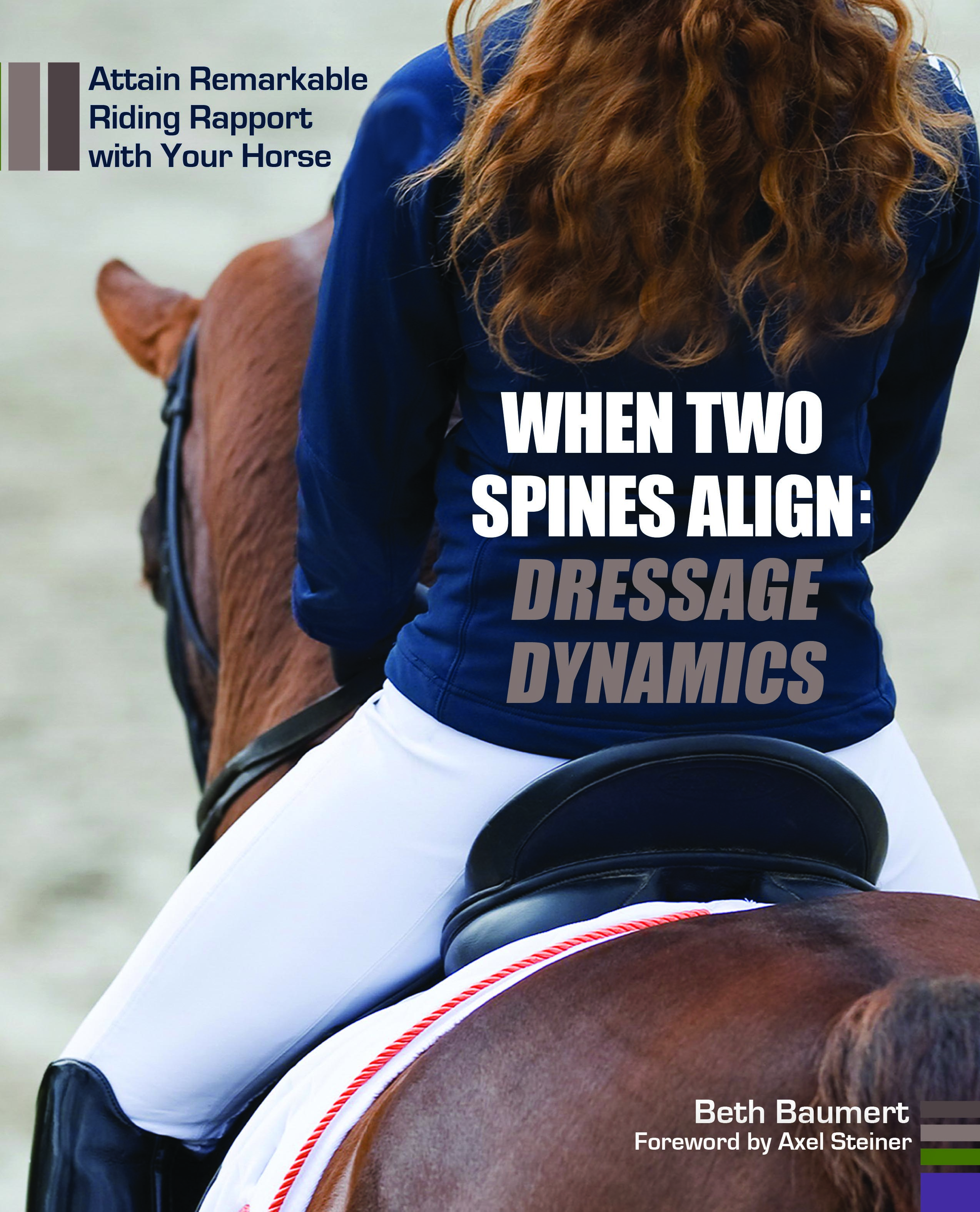The place where two spines meet is where the central nervous systems of horse and rider come together. In her book Where Two Spines Align: Dressage Dynamics, Beth Baumert explores this very sensitive area, and how many riders, even after years of riding experience, have no idea how influential the seat can be.
“It’s like the mind,” Baumert writes. “We’re not aware that we use such a small percentage of it.”
***
The seat gives the weight aid, which is the only aid that a rider can’t remove completely. She can release the rein, and she can take away her leg, but her weight is always there. However, the rider’s weight can be regulated when and only when her seat is balanced.
Three factors make a “balanced seat”:
The Flexible Floor: The rider sits on the “floor” of her seat—that is, the triangular space within her two seat bones and pubic bone.
Supple Strength: The floor of the seat is flexible but stable and strong so it can follow the horse’s motion with control. When a rider is learning, this takes mental discipline as well as physical strength and suppleness.
Building Blocks: The rider’s body parts are like building blocks. Her bottom building blocks, her feet, should be directly under her, supporting her seat and upper body.
1. The Flexible Floor
The “floor of your seat”—the triangular space within your two seat bones and the pubic bone—moves as the horse’s back and the correctly fitted saddle move. The multi-dimensional flexibility of your pelvis enables the floor of your seat to follow the horse’s back with sensitivity. Surface follows surface. Your pelvis makes tiny three-dimensional movements. It can, for example, move each hip up, forward, down, and back. Independent from this, your pelvis can also be tilted in relation to your spine with your tailbone pointed down and forward, or back and up.

Illustration by Sandy Rabinowitz
When you follow the horse’s back with the floor of your seat, you’re in the best position to grow tall in your front. This frontline is responsible for a rider’s self-carriage in the same way that the horse’s topline carries him. By anchoring your pubic bone and keeping your frontline tall, you stabilize your core: the 29 pairs of muscles that surround your center of gravity enabling you to move in a coordinated, controlled way.
2. Supple Strength
“Suppleness of the seat” refers not only to its looseness but also to its stability, which is based on core strength. The seat shouldn’t be so loose that it’s “out of control.” Riders don’t usually realize when their undisciplined seats slosh, slide, and shove. Some think that “using the seat” means shoving every stride. However, horses find a “noisy” seat distracting, annoying, or intolerable, so they “tune out” and simply ignore it.

Photo by Brenda V. Cataldo
While “using the seat” does imply that the rider is doing something, she should never move more than the horse’s back moves until she gives an aid. Your passive seat follows the horse. When a rider who has been sloshing and shoving in the saddle with insensitivity for years makes an attempt at being perceptive and educated with her seat, it’s amazing that the horse usually listens immediately.
3. Building Blocks
Everyone knows how easy it is to stay balanced on a horse at a standstill or a walk. You simply need to keep your feet under your seat and your head on top as if you are standing or walking on the ground. This vertical, ear-shoulder-hip-heel alignment is important because it gives you stability based on gravity, and you can always depend on gravity.

Illustration by Sandy Rabinowitz
The dynamics of how you ride your horse can tap into this law of nature that never fails us; gravity grounds us to the center of the earth. But when in motion, the thrust of the horse challenges the rider’s vertical self. When you learn to follow your horse and not use your seat in the walk, trot, and canter, it will be easy to learn how to use it. When your building blocks are in place, and your seat can follow your horse’s back with sensitivity, you’re in a position to use your seat with sophistication.
***
This excerpt from When Two Spines Align: Dressage Dynamics by Beth Baumert is reprinted with permission from Trafalgar Square Books.


 December 15, 2017
December 15, 2017 


























